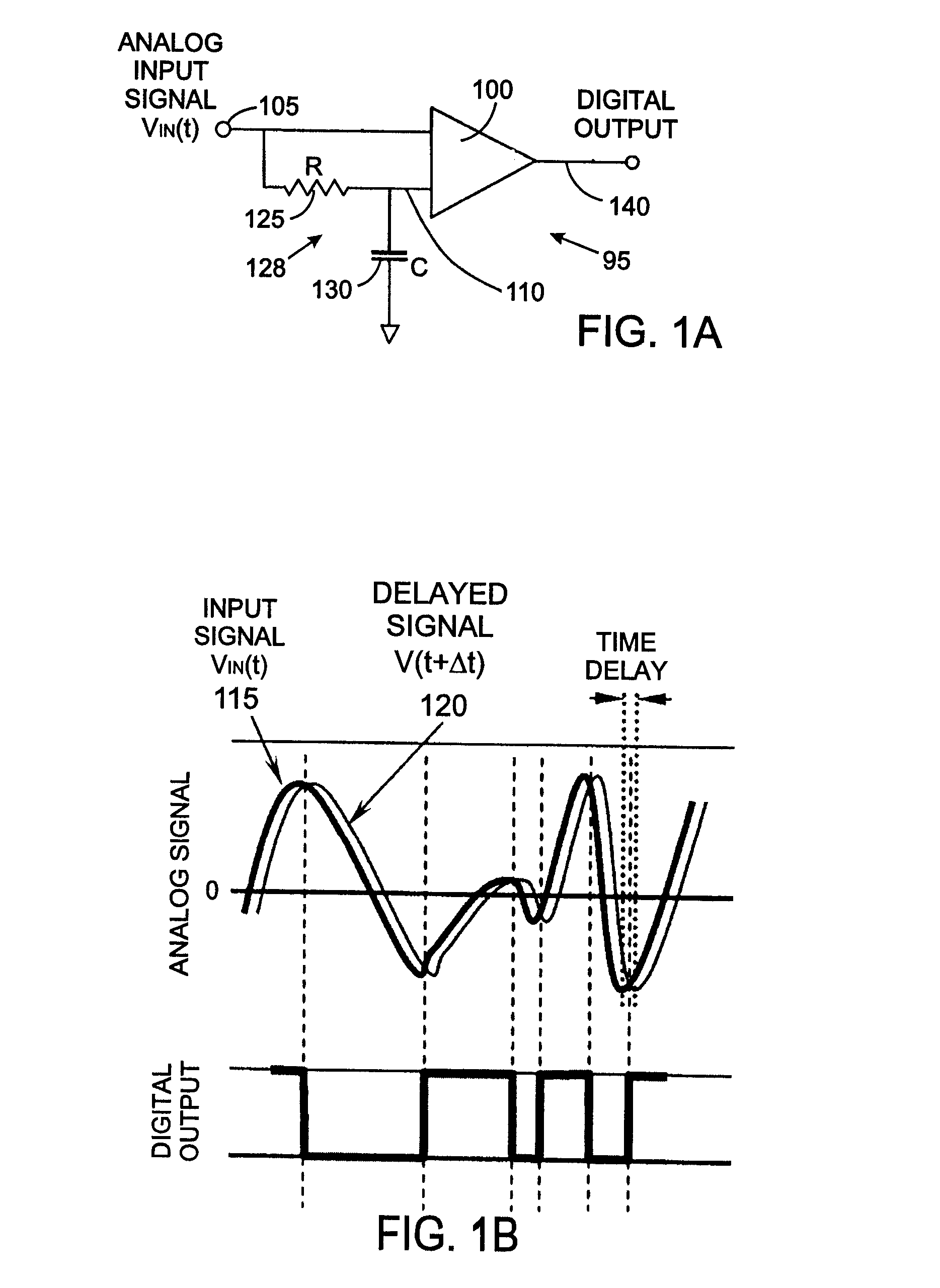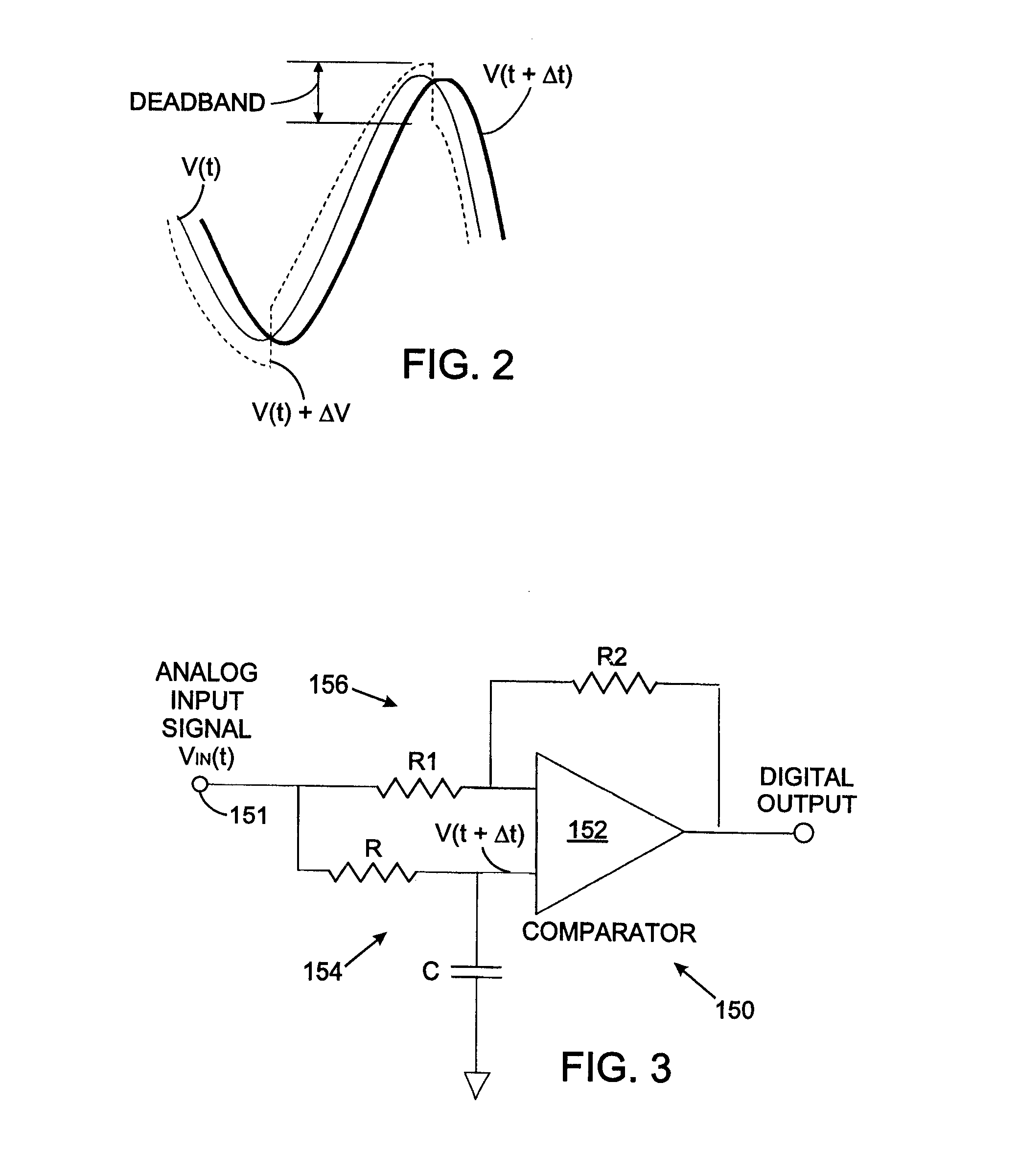Analog signal transition detector
a technology of analog signal and detector, applied in the field of analog signal predefined transition detection apparatus, can solve the problems of compromising accurate zero crossing detection, low amplitude components of band limited signals, and difficult to achieve input value equality in practi
- Summary
- Abstract
- Description
- Claims
- Application Information
AI Technical Summary
Benefits of technology
Problems solved by technology
Method used
Image
Examples
Embodiment Construction
[0039]Although the present invention is described in the context of transition detection of physiological signals, the present signal feature detector may be used for a variety of signals, including but not limited to electrical, mechanical, acoustic and ultrasound signals. It is important that the input signal Vin(t) to the detector is a band limited signal.
[0040]Initially, referring to FIGS. 1A and 1B, a hardware implementation of a signal feature detector 95 according to the present invention includes a comparator 100, which receives the input signal Vin(t) at and input node 105 to be containing transitions to be detected and receives a time-shifted version of that signal Vin(t+Δt) 110. An exemplary input signal Vin(t) is depicted by line 115 and with waveform 120 corresponding to the time-shifted signal Vin(t+Δt). In response to those signals, the comparator 100 identifies features in the input signal Vin(t) that are distinguished by having a local zero derivative representing t...
PUM
 Login to View More
Login to View More Abstract
Description
Claims
Application Information
 Login to View More
Login to View More - R&D
- Intellectual Property
- Life Sciences
- Materials
- Tech Scout
- Unparalleled Data Quality
- Higher Quality Content
- 60% Fewer Hallucinations
Browse by: Latest US Patents, China's latest patents, Technical Efficacy Thesaurus, Application Domain, Technology Topic, Popular Technical Reports.
© 2025 PatSnap. All rights reserved.Legal|Privacy policy|Modern Slavery Act Transparency Statement|Sitemap|About US| Contact US: help@patsnap.com



